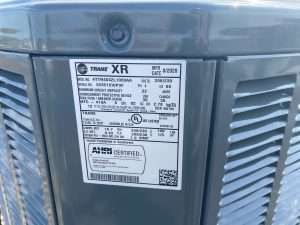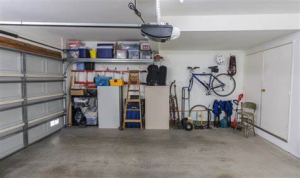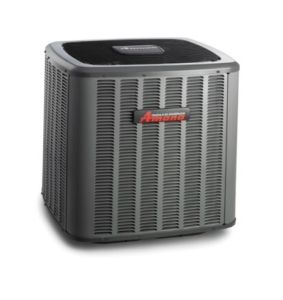The Impact of R-22 Freon Phase-Out
What is R-22 Freon?
R-22 Freon, also known as HCFC-22 or chlorodifluoromethane, is a colorless gas that belongs to the class of hydrochlorofluorocarbons (HCFCs). It has been widely used as a refrigerant in various cooling systems, particularly in air conditioners and refrigeration units.
R-22 Freon is a chemical compound primarily composed of hydrogen, chlorine, and fluorine. It has a low boiling point, allowing it to absorb heat from its surroundings and cool the air. The purpose of R-22 Freon is to facilitate the heat transfer process to ensure efficient cooling in refrigeration and air conditioning systems.

R-22 Freon, with its unique thermal properties, has been a popular choice for many years. However, due to its harmful impact on the ozone layer, its production and importation have been phased out under the Montreal Protocol. As a result, the use of R-22 Freon is being gradually phased out, and alternative refrigerants with lower environmental impact are being adopted.
When R-22 Freon is released into the atmosphere, it can contribute to ozone depletion and global warming. As awareness about the environmental impact of HCFCs has grown, regulations have been implemented to encourage the transition to more eco-friendly refrigerants.
Why is R-22 Freon Cost Important?
The phase-out of R-22 Freon has important implications for its cost. As part of global efforts to protect the ozone layer, the production and importation of R-22 Freon have been gradually reduced, and was set to be completely phased out by January 1, 2020. This phase-out is regulated by the Environmental Protection Agency (EPA) in the United States.
The limited supply of R-22 Freon as a result of the phase-out has led to a significant increase in its cost. As the demand for R-22 Freon decreases and stocks deplete, the prices continue to rise. This means that obtaining R-22 Freon for servicing or repairing older air conditioning systems can be considerably more expensive.
Factors Influencing R-22 Freon Cost
Several factors contribute to the cost of R-22 Freon:
- Supply and Demand: The limited supply of R-22 Freon, coupled with its high demand for maintaining older air conditioning systems, has led to inflated prices. As the phase-out progresses, the supply diminishes further, causing prices to spike.
- Availability: The availability of R-22 Freon varies by region. In some areas, it may still be abundant, whereas in others, it may be scarce. This discrepancy in availability can impact the cost, with areas experiencing scarcity facing higher prices.
- Seasonal Demand: The demand for R-22 Freon tends to be highest during the summer months when air conditioning usage is at its peak. During these times, the cost of R-22 Freon may increase due to heightened demand.
- Labor Costs: The labor involved in handling and installing R-22 Freon can also influence its overall cost. Hiring a qualified technician who understands the complexities of working with R-22 Freon may come at a premium.
- Alternative Refrigerants: The availability and affordability of alternative refrigerants can also affect the cost of R-22 Freon. As more environmentally friendly refrigerant options become mainstream, the demand for R-22 Freon decreases, potentially influencing its cost.
R-22 Freon Cost Trends
The cost of R-22 Freon can vary depending on various factors such as location, demand, and availability. On average, the cost per pound of R-22 Freon currently ranges from $40 to $100. These prices can fluctuate based on market conditions and other factors.
The cost of R-22 Freon can vary significantly from one region to another. Factors such as local regulations, supply chain logistics, and market dynamics play a role in determining the regional variations in pricing. For instance, in areas with higher demand or limited supply, the cost of R-22 Freon may be higher compared to regions with more abundant availability. Check with local suppliers or contractors to get an accurate idea of the prevailing cost in your specific region.
Alternatives to R-22 Freon
The phase-out of R-22 Freon due to its harmful effects on the environment has led to the need for alternative refrigerants in the HVAC industry. In this section, we will discuss two popular alternatives: the transition to R-410A and the availability of other refrigerants on the market.
Transition to R-410A
One of the most widely adopted alternatives to R-22 Freon is R-410A. This refrigerant has gained popularity for its superior environmental properties and increased efficiency. Unlike R-22, R-410A does not contribute to ozone depletion, making it a more sustainable choice.
R-410A offers better heat transfer capabilities, resulting in improved overall system performance and energy efficiency. Its higher operating pressures require equipment designed specifically for this refrigerant, so it’s important to ensure that your HVAC system is compatible before making the switch.
Other Refrigerants on the Market
Apart from R-410A, there are several other alternatives to R-22 Freon available in the market. These refrigerants offer varying levels of environmental impact, efficiency, and compatibility with existing HVAC systems. The options are:
- R-32: This refrigerant has a lower global warming potential, making it a more environmentally friendly choice. R-32 also provides superior energy efficiency and is being used in some newer HVAC systems.
- R-407C: Commonly used as a drop-in replacement for R-22, R-407C offers a good balance between efficiency and cost-effectiveness. However, it is important to note that some equipment modifications may be necessary for its use.
- R-134a: While primarily used in automotive air conditioning systems, R-134a has found applications in certain commercial HVAC systems as well. It has a relatively low global warming potential but is less energy efficient compared to other alternatives.
- R-290: Also known as propane, R-290 is a natural refrigerant with very low global warming and ozone depletion potentials. It is highly efficient and has been gaining popularity in commercial refrigeration and air conditioning applications.
- R-744: Commonly referred to as carbon dioxide (CO2), R-744 is another natural refrigerant that has minimal environmental impact. It offers excellent energy efficiency and is being used in several commercial refrigeration systems.
Tips for Managing R-22 Freon Costs
Maintenance and Repair Practices
Proper maintenance and timely repairs can go a long way in managing R-22 Freon costs. Here are some best practices to consider:
- Regular maintenance: Schedule annual maintenance for your HVAC system, including checking refrigerant levels, cleaning coils, and inspecting for leaks. This can help keep your system running efficiently and minimize the need for costly repairs.
- Prompt repairs: Address any issues or malfunctions immediately to prevent further damage and higher repair costs. Ignoring minor problems may lead to major breakdowns, resulting in expensive repairs or even the need for a new system altogether.
- Air filter upkeep: Regularly clean or replace your air filters to ensure proper airflow. Clogged filters can strain your cooling system, reducing its efficiency and potentially leading to higher energy consumption.
Energy Efficiency Improvements
Improving energy efficiency is not only beneficial for the environment but also for your wallet. Consider the following measures to reduce R-22 Freon costs:
- Upgrade insulation: Proper insulation in your home can prevent cool air from escaping, allowing your cooling system to work more efficiently. Seal any gaps or cracks and consider adding insulation where needed.
- Programmable thermostat: Install a programmable thermostat to regulate temperature settings and optimize energy usage. Set it to adjust the temperature automatically when you’re away or asleep, saving on cooling costs without sacrificing comfort.
- Sealing duct leaks: Leaky ducts can waste a significant amount of cooled air, resulting in higher energy bills. Inspect your ductwork for any leaks or gaps and seal them with appropriate materials to improve system efficiency.
Conclusion
The cost of R-22 Freon has been steadily rising due to its phase-out in the United States. This increase in cost can be attributed to the limited supply and the high demand for R-22 Freon as people rush to maintain their existing air conditioning systems. With the ban on the production and importation of R-22 Freon, the prices are expected to continue to rise in the coming years.





